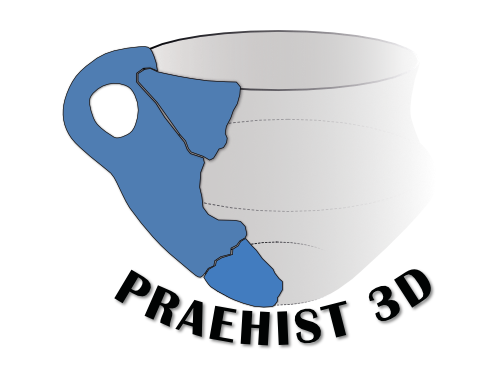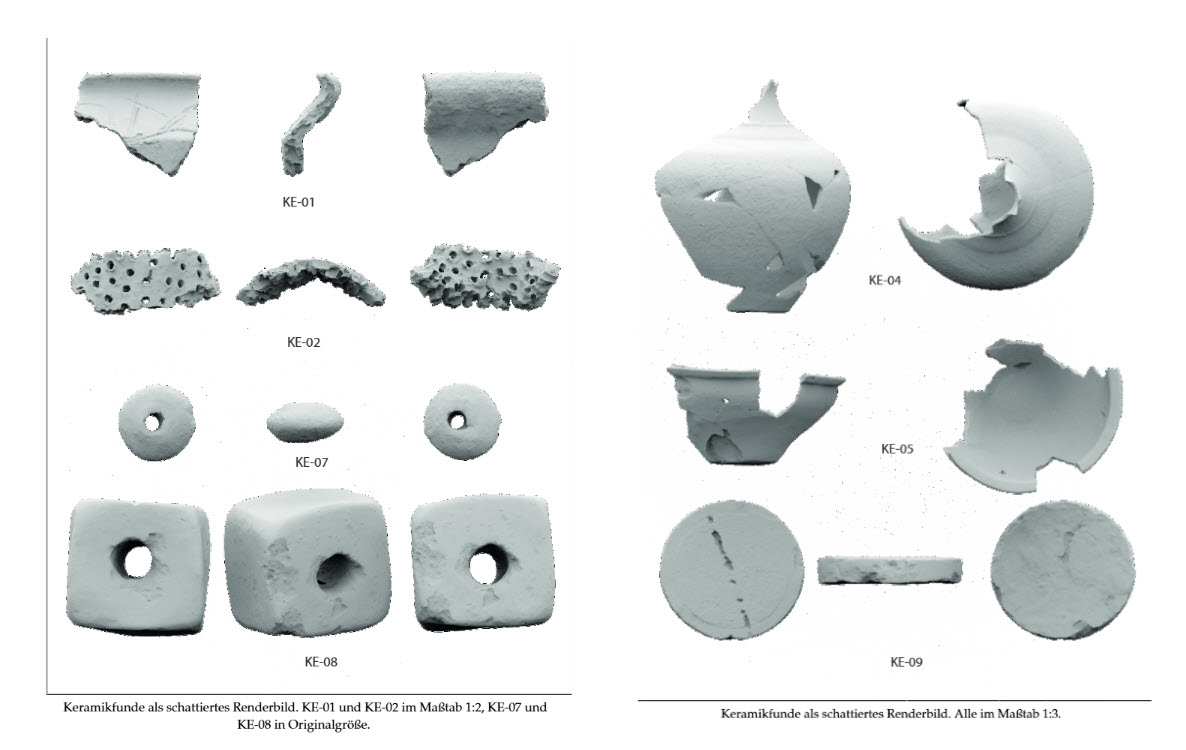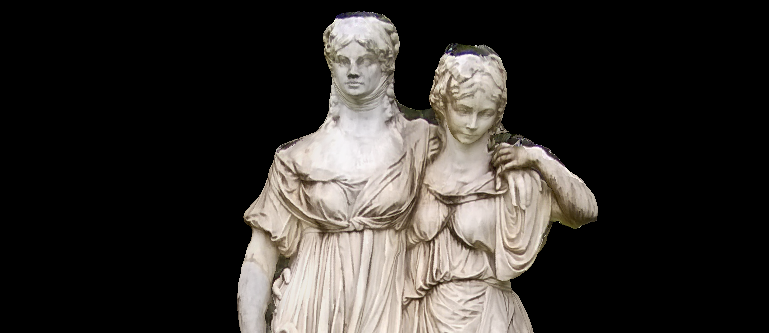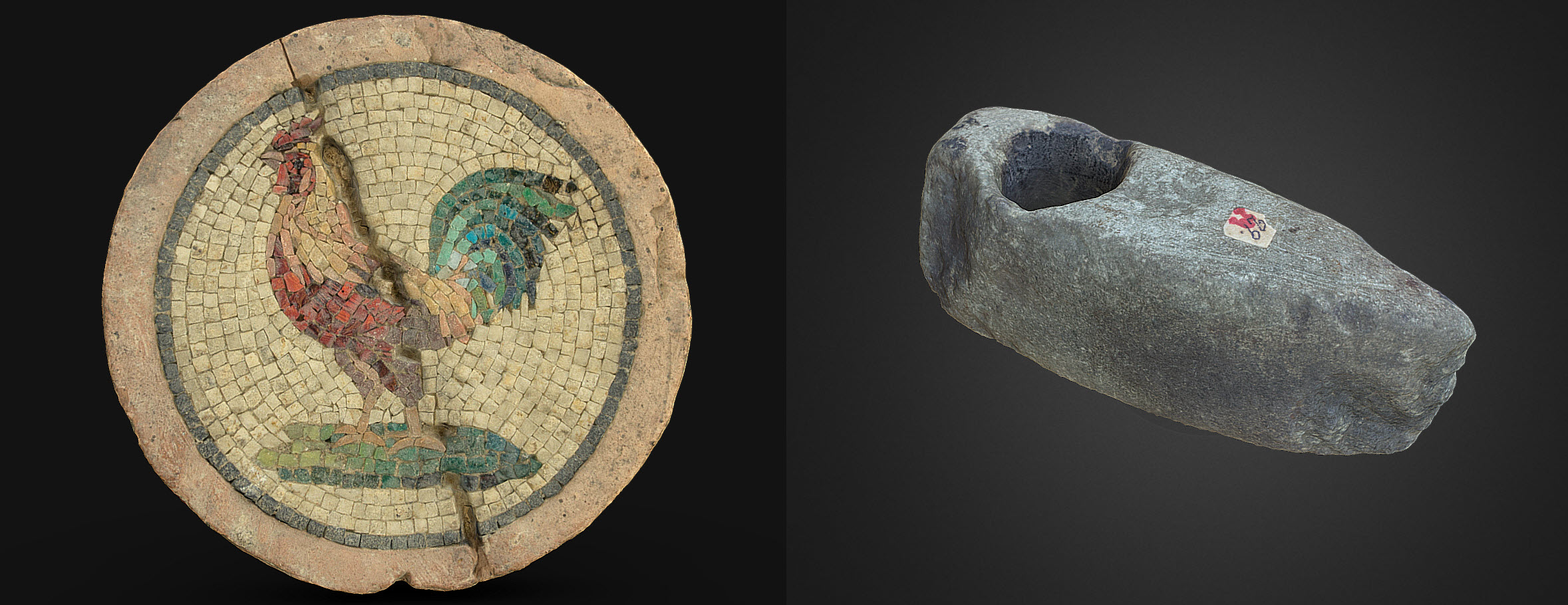opening remarks The following article deals with a special application of 3D printing. The project described here was realized by the company Formwerk3D, for which I now work. When parts are missing Some time ago, we were contacted by the owner of a beautiful old building with an interesting request. The old building in question…Continue readingMissing parts replaced by 3D printing I
After some back and forth, I have finally managed to finish my Master’s thesis. Actually, this blog was only supposed to serve as a notepad for it. The focus of the thesis is on the applicability of modern photogrammetry methods for recording archaeological finds. In order to provide a general overview, I have tested objects…Continue readingMaster Thesis – photogrammetry as a method for archaeological find documentation
Queens in the Park
Today, I’d like to present a short test object I made using my cellphone camera. Earlier this year I relocated to Hannover, Lower Saxony, so I have to pass these two ladies every day on my way to work. Sadly, I was always too lazy to carry a good camera with me, so I decided…Continue readingQueens in the Park
Apology… In the last month, it was really quite on this blog, and I’m really sorry for that. Besides finishing my master’s thesis, a new job and relocating to a new town, I didn’t find the time to write something useful. So I promise to change that and get more articles out! Hubris… It’s been…Continue readingReconstructed Germanic round shields
Today I just want to introduce two new 3D models: Roman rooster mosaic The model created from 80 aligned images was derived from a sparse point cloud to get a first look at the final model. The texture was mapped onto the 140k poly mesh. Unfortunately, this object has no location or date. It is…Continue readingShort Post – Roman rooster and stone age axe in 3D
3D objects in 2D media ?!
Today, the ways of archaeological object documentation are changing dramatically. So it’s possible to digitize finds in 3D and to create highly detailed models of original finds. These can be viewed and analyzed interactively. This model can be viewed with photorealistic textures, as a combination of several cuts or a simple blueprint. This very dense…Continue reading3D objects in 2D media ?!
Recording features through the web
from feature to model In this year’s may, a friend of mine asked me if it would be possible to make a 3D model from one of their newly excavated features. The mentioned feature was a complex early industrial structure, that was supposed to get digitized via photogrammetry. Within seconds, I agreed, and would have…Continue readingRecording features through the web
This horse bone from the Iron Age shows a massive pathological alteration. More on the topic of pathologic alteration of bones and their visualization soon.Continue readingSHORT Post – pathological bone alteration in 3D
3D digitized Pottery II
One of the first published articles on this blog dealt with the possibilities of representation of digitized pottery. And as I promised a few months ago, here follows a short addendum to the visualization of fragmented vessels. Original Scan For the reconstruction of the cup supplements, I have used the scans from the original post. These are,…Continue reading3D digitized Pottery II
Information saved in bones One of the main traces of past human life and the diet of our ancestors are the written in the bones of the animals they ate. Bones are an ideal information carrier since they are well received in many soils, incurred in huge quantities and belong to the daily life. Zooarchaeologists specialized…Continue readingBones and Cuts I










